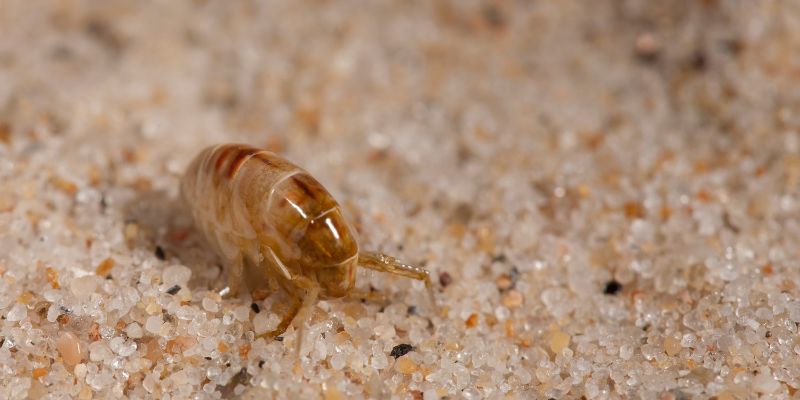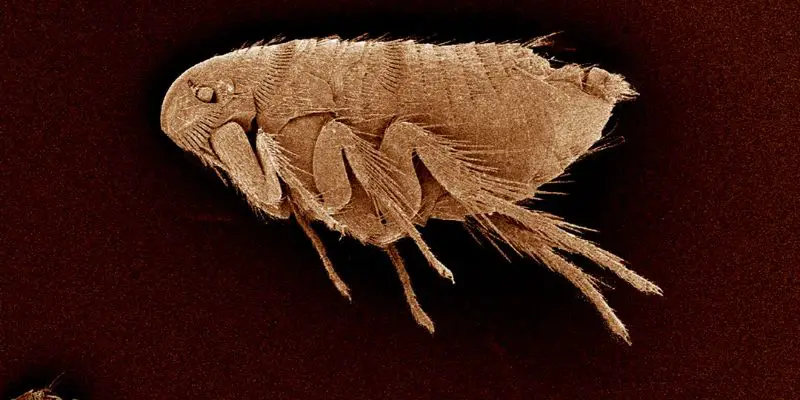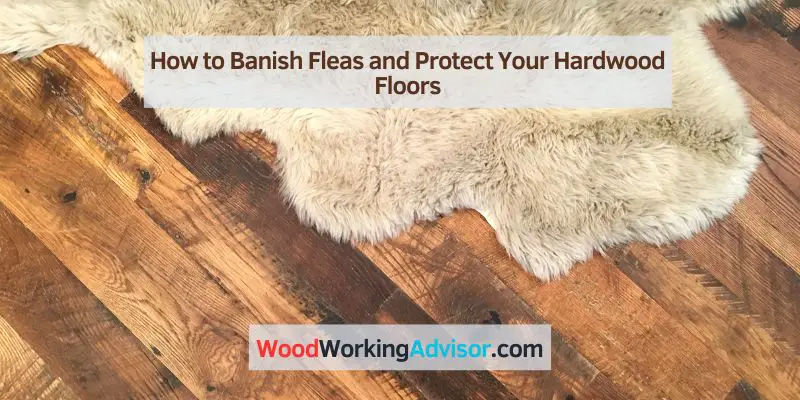To get rid of fleas on hardwood floors, vacuum thoroughly to remove fleas, eggs, and larvae, and then apply a flea treatment product specifically designed for hardwood surfaces. Introduce a regular cleaning routine to prevent future infestations.
Introducing fleas into your home can be a frustrating situation, especially if you have hardwood floors that seem to make flea eradication challenging. However, with the right approach, you can effectively eliminate these pesky insects and prevent them from coming back.
This article will provide you with simple yet effective methods to get rid of fleas on hardwood floors. By following these steps, you can quickly restore a flea-free and comfortable environment for you and your family. Let’s dive into the solutions and say goodbye to those annoying pests!
Understanding The Flea Problem
Get rid of fleas on your hardwood floors with these effective tips and tricks. Discover how to tackle the flea problem and keep your home pest-free with straightforward solutions.
Fleas are common pests that can quickly infest your home, causing discomfort for both humans and pets. If you have hardwood floors, you might think that you’re safe from flea infestations since the pests prefer carpets and other soft surfaces. However, fleas can still find their way onto hardwood floors and wreak havoc if not dealt with promptly. In this section, we’ll discuss how to identify fleas and the risks they pose to your hardwood floors.
Identifying Fleas
Identifying fleas is crucial in effectively combating and preventing infestations. These tiny, wingless insects are usually brown or reddish-brown and measure about 1/8 inch in length. They have flat bodies and strong hind legs, allowing them to jump remarkable distances. Fleas are often found on pets, as they feed on their blood. When inspecting your pets for fleas, look out for excessive scratching, red bumps, or flea dirt, which appears as pepper-like specks in their fur. Additionally, fleas can also bite humans, causing itchy red welts.

Understanding The Risks To Hardwood Floors
While your hardwood floors may not be as appealing to fleas as cozy carpets, they can still provide harborage for the pests. Fleas can jump onto your hardwood floors from infested pets or other contaminated surfaces. Once on your floors, they can hide in crevices, under furniture, or in tiny gaps between the floorboards. Fleas can also lay eggs on hardwood floors, leading to a full-blown infestation if not addressed promptly. The pests feed on organic matter, including their own feces, dead skin cells, and blood, which can tarnish the beauty of your hardwood floors over time. It’s essential to take swift action to eliminate fleas and protect your hardwood floors from damage.
In conclusion, understanding the flea problem is vital for effective flea control, even when dealing with hardwood floors. By identifying fleas and recognizing the risks they pose to your floors, you can take the necessary steps to get rid of these pests and maintain the beauty of your hardwood flooring.
Preventive Measures For Flea Infestations
Prevent flea infestations on hardwood floors with these effective preventive measures. Keep your floors clean, vacuum regularly, use flea repellents, wash pet bedding frequently, and consult a pest control professional if necessary. Keep your home flea-free and ensure the health and safety of your pets.
Flea infestations can quickly become a nuisance in your home, causing discomfort for both you and your pets. However, by implementing preventive measures, you can effectively keep fleas at bay, especially when it comes to hardwood floors. In this section, we will discuss three key preventive measures that you can take to get rid of fleas and maintain a flea-free home. These measures include regular cleaning and vacuuming, sealing cracks and gaps, and using natural remedies.
Regular Cleaning And Vacuuming
Regular cleaning and vacuuming are essential in keeping fleas away from your hardwood floors. Dust, dirt, and debris can provide hiding places for flea larvae and eggs, allowing them to thrive and reproduce. By following a regular cleaning routine, you can eliminate these potential breeding grounds.
- Start by sweeping the floor to remove loose dirt and debris.
- Next, use a vacuum with strong suction power to thoroughly clean the floor. Pay close attention to areas where your pets often rest, as fleas tend to gather in these spots.
- Remember to empty the vacuum bag or canister and dispose of the contents properly to prevent re-infestation.
Sealing Cracks And Gaps
Sealing cracks and gaps in your hardwood floors can help prevent fleas from entering your home. Fleas are known for their ability to crawl through tiny openings, so it’s crucial to seal any potential entry points.
- Inspect your hardwood floors carefully for cracks and gaps.
- Use a sealant appropriate for hardwood floors to fill in any openings.
- Pay special attention to areas near baseboards, vents, and entryways.
- By sealing these openings, you can significantly reduce the chances of fleas finding their way into your home.
Using Natural Remedies
In addition to regular cleaning and sealing cracks, using natural remedies can be an effective way to repel fleas. These remedies are not only safe for your hardwood floors but also offer a chemical-free alternative to traditional flea control methods.
| Natural Remedies for Fleas | How to Use |
|---|---|
| Diatomaceous Earth | Spread diatomaceous earth over your hardwood floors, focusing on areas where fleas are likely to hide. Let it sit for a few hours before vacuuming it up. |
| Essential Oils | Mix a few drops of essential oils (such as lavender or lemon) with water in a spray bottle. Spritz the mixture on your hardwood floors, paying attention to areas where fleas might be present. |
| Herbs | Place dried herbs such as mint or rosemary in small sachets and tuck them in corners or under furniture. These herbs act as natural deterrents for fleas. |
By implementing these preventive measures, you can effectively get rid of fleas and create a flea-free environment on your hardwood floors. Remember to be consistent with your cleaning routine and to monitor your pets for any signs of flea activity. With a little effort, you can maintain a flea-free home and enjoy a comfortable living space for you and your beloved pets.

Removing Fleas And Protecting Hardwood Floors
Fleas can be a stubborn nuisance in your home, especially if you have hardwood floors. These pesky insects not only cause discomfort to your pets, but they can also damage your beautiful hardwood flooring. In this blog post, we will discuss effective methods to get rid of fleas and protect your hardwood floors. We will focus on treating pets for fleas, treating the home for fleas, and protecting hardwood floors from flea infestations.
Treating Pets For Fleas
When it comes to flea control, one of the first steps is to treat your pets. Fleas often thrive on the fur of your furry friends, causing them discomfort and potentially spreading throughout your home. Here’s how you can effectively treat your pets for fleas:
- Consult your veterinarian for appropriate flea treatment products that are safe for your pets.
- Regularly bathe and groom your pets using flea shampoos or soaps.
- Use flea combs to remove adult fleas and their eggs from your pets’ fur.
- Apply topical flea treatments or use flea collars recommended by your veterinarian.
- Wash your pets’ bedding and toys frequently in hot water to eliminate fleas.
Treating The Home For Fleas
If your pets have fleas, it is highly likely that your home is also infested. To effectively treat your home and prevent fleas from returning, follow these steps:
- Vacuum your hardwood floors thoroughly, paying extra attention to corners, crevices, and areas where your pets spend most of their time.
- Dispose of the vacuum cleaner bag immediately to prevent fleas from escaping and reinfesting your home.
- Wash your hardwood floors with a solution of warm water and a mild detergent suitable for wood surfaces.
- Use a steam cleaner to treat your hardwood floors, as the high temperatures can kill fleas and their eggs.
- Apply a pet-safe flea spray or powder to your hardwood floors and other areas where fleas may hide, such as baseboards and furniture.
Protecting Hardwood Floors
While treating your home for fleas, it is essential to take measures to protect your hardwood floors from any potential damage. Here are some tips to safeguard your hardwood floors:
- Place doormats at entrances to trap fleas from entering your home.
- Trim your pets’ nails regularly to prevent scratches on the hardwood floors.
- Use protective furniture pads or coasters to prevent furniture legs from scratching the floor when moving.
- Avoid using harsh chemicals or abrasive cleaners that can damage the wood finish.
- Consider using area rugs or floor mats in high-traffic areas to minimize wear and tear on the hardwood floors.
By following these steps to treat your pets, treat your home, and protect your hardwood floors, you can effectively get rid of fleas and maintain the beauty of your hardwood flooring. Remember, consistency and regular maintenance are key in preventing future flea infestations and keeping your home flea-free.
Conclusion
To effectively eliminate fleas on hardwood floors, it’s crucial to combine regular cleaning, vacuuming, and using natural remedies. By maintaining cleanliness and implementing preventive measures, you can create an environment that is unfavorable for fleas to thrive. Remember, keeping your pets clean and using pet-friendly products also plays a significant role in the prevention and treatment of fleas.
So, follow these steps diligently, and you’ll enjoy a flea-free home with gleaming hardwood floors. Happy cleaning!



2 thoughts on “How to Banish Fleas and Protect Your Hardwood Floors”